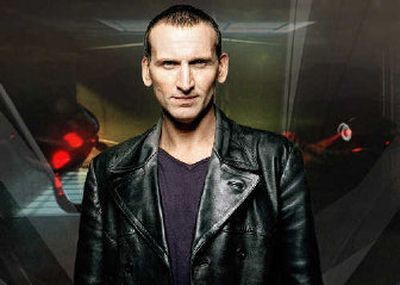The Doctor is in – again

As his devoted fans know, Doctor Who always has been capable of a pretty good disappearing act. But the last one he pulled – back on Dec. 6, 1989 – went on a bit longer than expected.
Tonight, when the good Doctor starts reappearing in new episodes on the Sci Fi channel, it will have been 16 years since the last episode of the original “Doctor Who,” perhaps the most curious cult classic in the history of television, was produced.
Over its first 26 years, the series about an enigmatic time-and-space traveler featured eight very different actors in the lead role, along with wonderfully loopy, 1960s-hip dialogue and some of the worst special effects ever – including aliens made of inflated condoms.
A huge hit in Great Britain, “Doctor Who” didn’t surface in this country until the late 1970s, when it became a staple of Saturday night programming on many PBS stations.
But despite the pleas of the faithful, there were no new episodes anywhere until last year, when Russell T. Davies – the powerhouse British writer-producer of such shows as the original “Queer as Folk” – finally persuaded the BBC to let him take a shot at reviving the franchise with some modern twists.
Much to the network’s surprise, his take on “Doctor Who” became one of the most-watched series on British TV. And now the show returns to America with the 13 episodes that made up Davies’ first season on the BBC.
The good news for longtime fans is that he hasn’t mucked around with the quirky essence of “Doctor Who” that much, while giving it a more polished look.
The Doctor, as he always is referred to in the series, still is the last surviving member of a race wiped out in a time war (don’t even ask) and still is going through various dimensions with a goofy grin and a passion for trying to right wrongs.
He doesn’t always get it right – in earlier episodes, he was partially responsible for Nero’s burning of Rome, the Great Fire of London and the appearance of the Loch Ness monster – but he tries.
He also still travels with a comely assistant in the TARDIS (Time and Relative Dimension in Space), a space-time craft that’s large and comfy inside even if it looks like a 1950s British phone booth on the outside.
And his opponents – including the Daleks, his longest-running foes – are still the funniest, least-threatening group of bad guys in science fiction history.
What has changed is that this Doctor, as played by Christopher Eccleston (“Elizabeth,” “28 Days Later”), is more robust and active than his predecessors.
Don’t get too used to Eccleston, though. He bowed out after one year and has been replaced for the second new season in Britain by David Tennant (“Viva Blackpool,” “Harry Potter and the Goblet of Fire”), who becomes the 10th Doctor Who.
But even that is in keeping with the show’s tradition; when near death, a Time Lord can renew himself and return as a completely different person.
The Doctor’s latest assistant, a London shopgirl named Rose Tyler (pop singer Billie Piper), is as much the hero as he is, coming off as Buffy the Vampire Slayer with a British accent.
The special effects are computer-generated and state-of-the-art – although part of that art is paying homage to the cheese-ball originals by not making the effects look too good. In tonight’s episode, for example, the Doctor battles amusingly robotic department store mannequins and a big blob of pulsating plastic.
If you’re looking for allegorical, intriguing science fiction, this isn’t it. If you’re OK with rapid-fire, light-hearted dialogue with an occasional dig at politics and culture, this “Doctor Who” is your cup of tea.